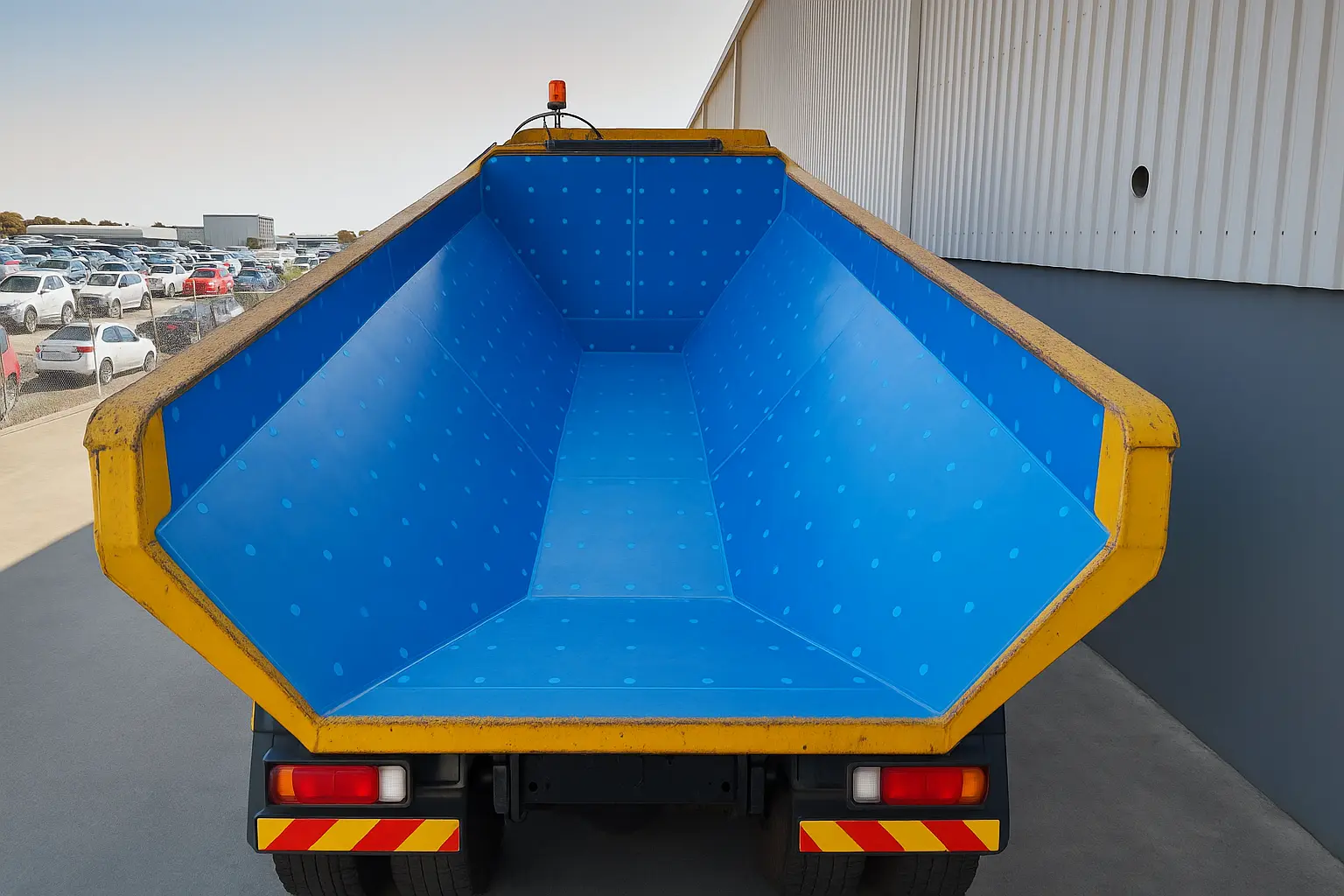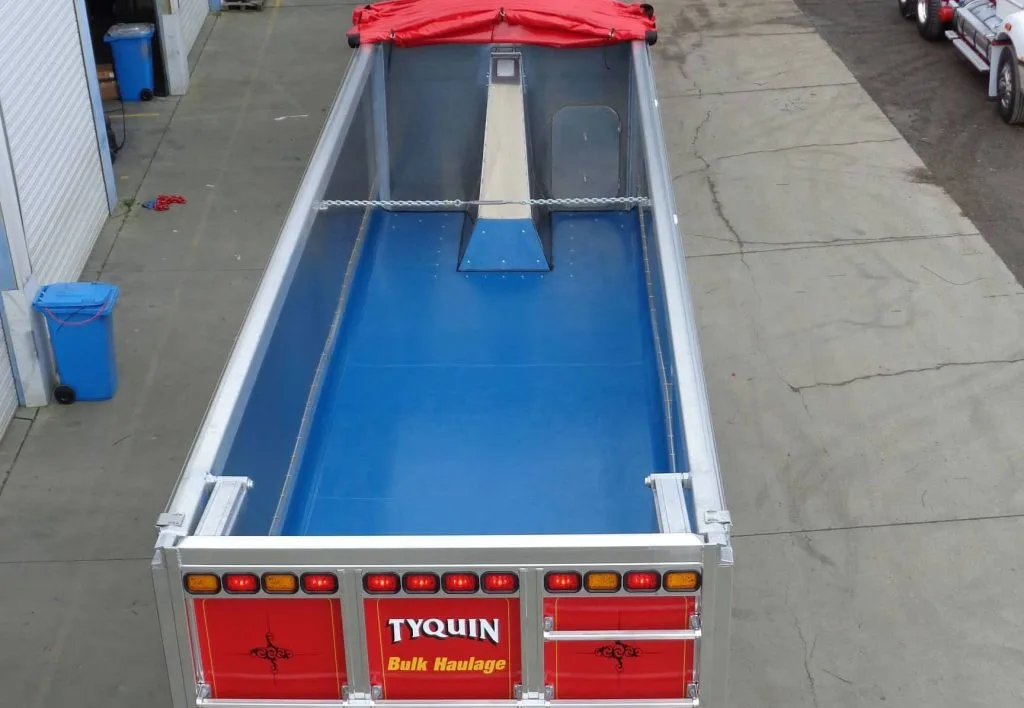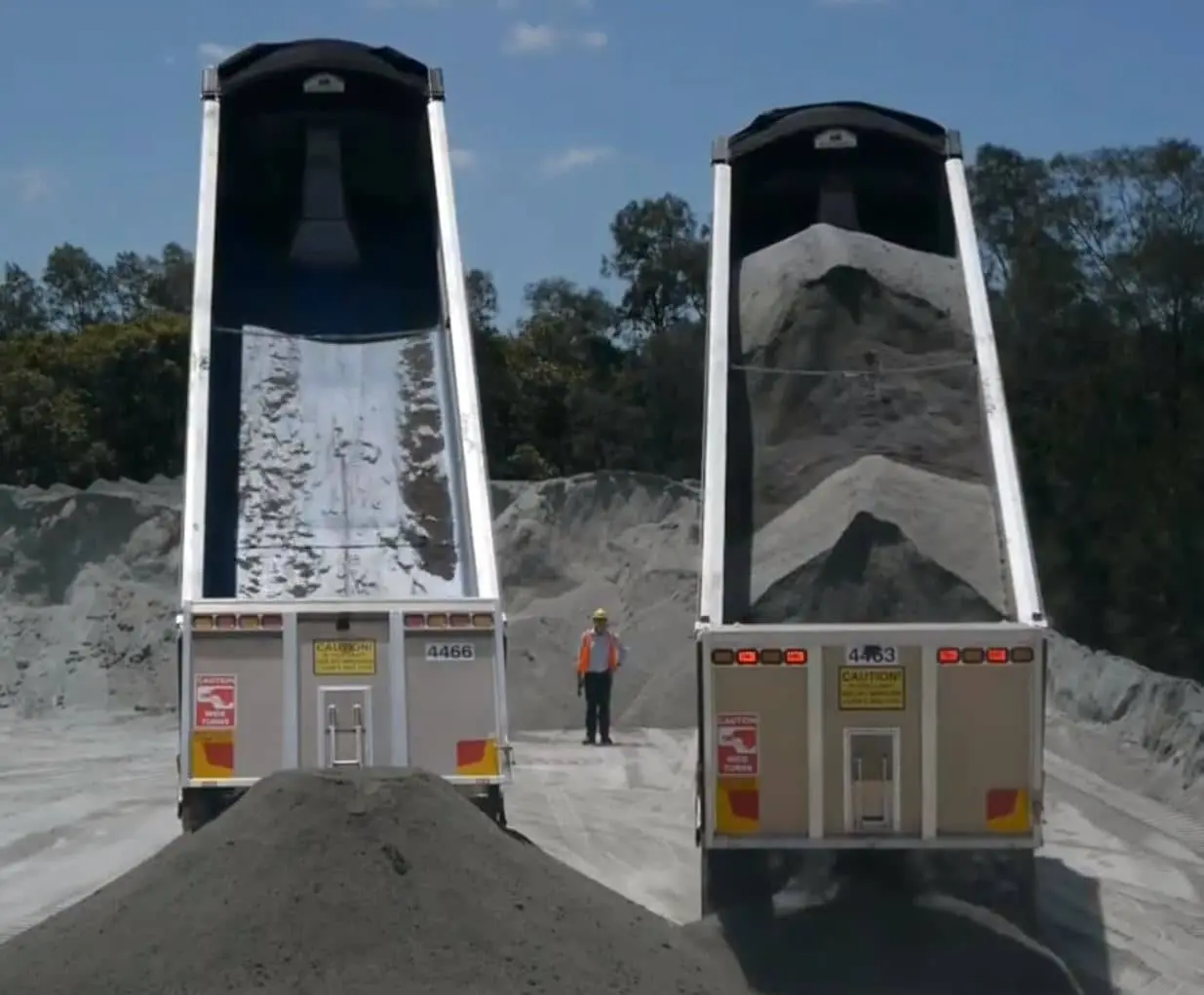At a glance
- UHMWPE combine low friction, high impact resistance, and strong wear protection, helping materials flow more easily while reducing equipment wear.
- One UHMWPE liner can be used across chutes, hoppers, and bins, simplifying material choice and making maintenance more consistent.
- The material’s flexibility means it can be shaped and installed across different equipment types using well-proven fastening techniques.
- OKUSLIDE® UHMWPE liners can streamline procurement, create more consistent performance across the fleet, and lower operational risks.
In industries such as mining, agriculture, excavation, and bulk transport, one challenge remains constant: how to move bulk material efficiently, safely, and without unnecessary downtime.
Whether you’re working with ore, fertiliser, or gravel, equipment such as chutes, hoppers, and bins endures significant wear and stress as they handle bulk material flow. These components are typically the first points of contact between the load and the machinery, making them vulnerable to wear, build-up, and blockages.
This raises a natural question for operators and fleet managers: Is there one liner material that can effectively be used across all these applications?
The short answer: Yes.
One liner material can line chutes, hoppers, and bins, if it delivers the right balance of wear resistance, low friction, adaptability, and durability. Ultra-High-Molecular-Weight Polyethylene (UHMWPE) is widely used to meet exactly these demands.
In this article, we’ll explore why UHMWPE, especially engineered variants like OKUSLIDE®, has become a trusted choice across these components in mining, construction, transport, and agriculture.
Why Standard Steel Surfaces Fall Short
Chutes, hoppers, and bins, despite their differing shapes and functions, are all designed to help materials move from one location to another. While most are made from structural steel for strength, steel has a major drawback: high surface energy. This quality causes materials like ore, clay, or fertiliser to cling to surfaces, leading to material hang-ups, uneven flow, or long-term damage.
That’s where UHMWPE-based liners come in. With a surface energy of around 1/20th that of steel, UHMWPE significantly reduces friction and sticking. Materials flow more freely, unloading becomes smoother, and the entire system experiences less wear and tear.
Key Properties That Make UHMWPE Ideal
The performance advantages of a UHMWPE liner go well beyond surface friction. In environments where equipment faces constant wear, impact, and flow-related stress, UHMWPE provides a well-rounded set of properties that help protect critical components and keep material moving efficiently.
These include:
- Low friction coefficient: Ideal for fast, uninterrupted flow.
- High impact resistance: Perfect for components that take repeated heavy hits.
- Exceptional abrasion resistance: Making it long-lasting even in high-throughput systems.
Because of this combination of properties, UHMWPE can serve as a universal solution for lining chutes, hoppers, and bins. And with engineered grades such as OKUSLIDE® Premium Blue, operators gain a liner that not only delivers these advantages but also offers proven reliability across harsh Australian industrial environments.
OKUSLIDE®’s Performance Across Chutes, Hoppers, and Bins
Here’s how OKUSLIDE® UHMWPE liners deliver practical benefits across each of these components:
Chutes
Chutes are often angled to help materials move down into the next stage of processing. In industries like mining and construction, these surfaces are affected by fast-moving, high-impact loads. OKUSLIDE® absorbs that impact while reducing surface friction, allowing both heavy and sticky materials to flow smoothly and with minimal resistance.
Hoppers
Hoppers control the flow of materials through a narrow outlet, but they’re prone to common problems like bridging and rat-holing, where material clumps or sticks to the walls. Lining hoppers with OKUSLIDE® helps resolve these issues by significantly lowering wall friction, which promotes reliable, even flow and reduces blockages.
Bins
Bins are used for storing and batching materials, and complete emptying is critical to avoid contamination and maintain efficient flow through the process. The same OKUSLIDE® liner used in chutes and hoppers can be cut to fit bins of all shapes and sizes, helping ensure consistent discharge and reducing the need for manual cleaning between loads.
In other words, a single liner material, when chosen correctly, can deliver reliable, consistent performance across all three components.
Installation Flexibility: One Liner for Many Shapes
Selecting the right material is one part of the equation. Equally important is the ability to install it effectively across different equipment shapes and sizes, without adding unnecessary complexity to the process.
OKUSLIDE® is highly adaptable to different equipment types and structures and can be installed in several ways, depending on the structure of the parent component:
- Stud welds with weld washers for heavy-duty applications.
- Fanged bolts for areas where access is limited.
- Mechanical fasteners like countersunk screws and rivets for quick fitment.
Whether the structure is curved, sloped, or deep-walled, OKUSLIDE® sheets can be precisely cut and fitted to suit. This versatility reduces the need for multiple liner types or overly complex fitting processes.
Operational Advantages of Using the Same Liner Material
Fleet managers already manage enough complexity, dealing with multiple liner materials across different equipment only adds to it. When each material requires its own procurement process, maintenance routine, and staff training, costs and risks quickly build up.
Using one-liner material, such as OKUSLIDE® UHMWPE, across chutes, hoppers, bins, and more, offers a smarter alternative. It simplifies procurement, reduces the need for varied stock, and makes it easier to train teams on a single installation method. Just as importantly, it ensures consistent performance across your fleet regardless of equipment type or load.
OKUSLIDE® takes this concept even further. Its UHMWPE liners are engineered to be cut and adapted for a wide range of equipment, from excavator buckets and side tippers to curved bins and steep chutes. This one-material-fits-many approach is designed to withstand the tough demands of the Australian industry.
When a Single Material May Not Be Enough
Although UHMWPE is incredibly versatile, it’s not always the perfect fit. Here are a few situations where a different liner material may be required:
- High-temperature applications: UHMWPE’s max continuous use temperature is around 80°C. Anything hotter requires a different thermoplastic or ceramic composite.
- Chemical exposure: Some chemicals—especially strong oxidisers or solvents—can degrade UHMWPE. In these settings, chemically resistant plastics may be required.
- Static-sensitive environments: In places where static discharge is a risk (like grain handling), UHMWPE without anti-static additives may not be suitable.
These are the exceptions, not the rule. For general-purpose flow and wear protection in mining, construction, transport, and farming, UHMWPE covers more ground than almost any other material.
The challenges of bulk material handling don’t lie in patchwork fixes or sourcing a new liner for every job. They lie in smart standardisation, using one high-performance material to do the job of many.
By understanding how surface energy, mechanical stress, and flow dynamics work together, operators can now view UHMWPE-based liners like OKUSLIDE® as a complete solution, not just a quick fix for an isolated problem.
OKUSLIDE® demonstrates this in practice, offering ready-to-fit liner kits made from the same robust material across chutes, hoppers, bins, and more.
Looking to streamline your operations with a single, reliable liner solution? Contact OKUSLIDE® now for a one-material liner that’s suited for your entire operation.



